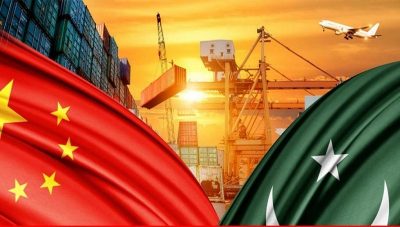Pakistan’s Foreign Relations and the China-Pakistan Economic Corridor (CPEC)

The following article was written in response to a question asked by Ms. Sheila Khalid, a Ph.D. student working on the topic “Pakistan-Russia Relations in the Post-9/11 Era” at Quaid-e-Azam University, Islamabad, as part of her academic research.
How would you categorize Pakistan’s foreign policy today?
Pakistan’s foreign policy appears to be in transition as the country redirects its focus from the US to China through the Belt & Road Initiative’s (BRI) flagship project of CPEC. In a broader sense, Pakistan is trying to find its place in the emerging Multipolar World Order after previously occupying a well-defined one in the bipolar and unipolar ones of the past. What’s needed, however, is a sense of vision, which I’ve tried my best to provide through my analyses earlier in the year titled “CPEC+ Is The Key To Achieving Regional Integration Goals” and “Pakistan: The Global Pivot State“.
The gist is that CPEC makes Pakistan the “Zipper of Eurasia” through the northern, western, and southern branch corridors of CPEC+ (N-CPEC+, W-CPEC+, and S-CPEC+, respectively), which in turn enables a “Convergence of Civilizations” that could powerfully counteract Huntington’s thesis about a so-called and supposedly impending “Clash of Civilizations”. By leveraging its position at the center of this emerging integration platform, Pakistan can become the anchor of two complementary structures, the Multipolar Trilateral between itself, China, and Russia, and a Multipolar CENTO with Iran and Turkey.
The Multipolar Trilateral and Multipolar CENTO can combine to create the Golden Ring of all five of those rising powers and the Central Asian Republics (which includes Afghanistan in this sense and also Azerbaijan). CPEC is at the core of this structure, and N-CPEC+ through post-war Afghanistan is the integration axis connecting Pakistan with Russia, thus complementing the Greater Eurasian Partnership and also furthering President Putin’s recently articulated vision of an Arctic-Indian Ocean Corridor, to say nothing of easing the integration of the EAU and BRI like he promised to pursue earlier in the year at the Belt & Road Initiative Forum.
Bearing this ambitious grand strategy in mind, it was therefore a welcome surprise that Mr. Abdul Hafeez Shaikh, Prime Minister Imran Khan’s advisor on finance, reportedly spoke last weekend about what Nikkei Asian Review stylized as “CPEC-plus”. This strongly suggests that Pakistani decision makers are aware of their country’s unparalleled geopolitical position and are considering ways to leverage it along the lines of the CPEC+ model that I described with the aim of becoming the global pivot state. Without a sense of vision such as this one, Pakistan is doomed to simply react to the ongoing global systemic transition and never truly be proactive.
It’s important to keep in mind that CPEC is obviously at the heart of CPEC+ and all of the subsequent integration concepts (Zipper of Eurasia, Convergence of Civilizations, Multipolar Trilateral, Multipolar CENTO, Golden Ring) that stem from it, meaning that the focus is inherently geo-economic despite also having a very impactful geopolitical significance. Everything that Pakistan does must be with the intent of eventually bringing jobs and prosperity to its growing population, as even the most deft geopolitical maneuvering is bound to eventually fail without a solid economic basis at home.
Considering this, the next step should be for Pakistan to officially articulate its vision of CPEC+ so that its compatriots and international counterparts alike can be aware of the mutually beneficial future that the state is working towards achieving. The creation of working teams, academic groups, entrepreneur gatherings, and other events bringing together domestic and international stakeholders must be urgently commenced next year in order to take Mr. Shaikh’s CPEC+ concept to the next step by turning it into something tangible. There’s still a long way to go, but I’m confident that Pakistan’s transitional foreign policy is on the right track.
*
Note to readers: please click the share buttons above or below. Forward this article to your email lists. Crosspost on your blog site, internet forums. etc.
This article was originally published on OneWorld.
Andrew Korybko is an American Moscow-based political analyst specializing in the relationship between the US strategy in Afro-Eurasia, China’s One Belt One Road global vision of New Silk Road connectivity, and Hybrid Warfare. He is a frequent contributor to Global Research.
Featured image is from OneWorld

